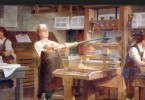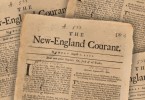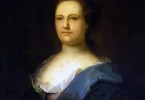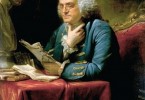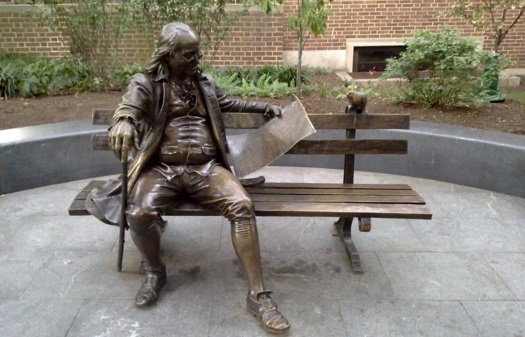
Bronze statue of Benjamin Franklin reading the Pennsylvania Gazette. It is known as Ben on the Bench by University of Pennsylvania students.
Franchise
By the early 1730’s Franklin’s business was thriving. The Pennsylvania Gazette was the most popular newspaper in the colony with a wide network of distribution and paid advertising. Poor Richard’s Almanack was a best seller in the colonies printing up to 10,000 copies a year.
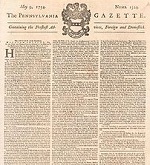
Franklin acquired The Pennsylvania Gazette from his former boss Samuel Keimer.
Franklin had the idea to expand his business by promoting his workers and establishing them with a printing house in other colonies. In these partnerships Franklin rented a shop and provided all the printing equipment in exchange for one third of the profits during a 6-year term. The partner would provide the labor and at the end of the 6-year term they were allowed to purchase the equipment from him and work for themselves. Franklin had founded the first commercial franchise system in the Americas.
In 1731 Franklin signed his first business agreement with Thomas Whitmarsh who opened a printing shop in South Carolina. Whitmarsh died two years later and Franklin appointed his journeyman Lewis Timothee to run the shop. Timothee died soon after, his son was underage and unable to run the business so his wife Elizabeth Timothee took over and became the first woman franchisee. During the time the Founding Father was in the printing business he had two female franchisees, the second one was his sister-in-law, Ann Smith Franklin who went into partnership with him in 1762.
Franklin expanded his business by initially identifying cities with no printers or with room for competition then he offered the site to an employee who had shown good work ethic. Franklin’s network of printers grew to be the largest and most powerful in colonial America stretching from New England to the West Indies. Franklin had a key role in training printers that would play an important part in the fight for independence.
Retirement from printing
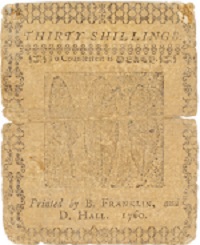
Currency printed by Franklin and Hall
By the late 1740’s Franklin had built a fortune that enabled him to live comfortably and engage himself in public projects and electrical experiments.
In 1748 Franklin took a partner, David Hall, who took care of the daily printing business leaving him more time for public projects. Hall also edited and published the Pennsylvania Gazette and Poor Richard’s Almanack.
David Hall was born in Scotland in 1714. He came to America invited by Franklin who was in need of a journeyman printer. Hall proved himself reliable, industrious and competent, Franklin trusted him and made him his business partner. They signed a co-partnership agreement for an 18 year term until 1766. This agreement specified that all costs, rent and income was to be split equally between the partners.
When his partnership with David Hall expired in 1766 Franklin was in London working as a colonial agent. He was working on appealing for the repeal of the Stamp Act before the British House of Commons.
Franklin, absorbed in politics, sold his entire printing business to David Hall. Hall created a new company Hall and Sellers becoming one of the official continental currency printers.
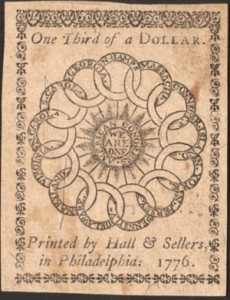
Continental currency printed by Hall and Sellers.


